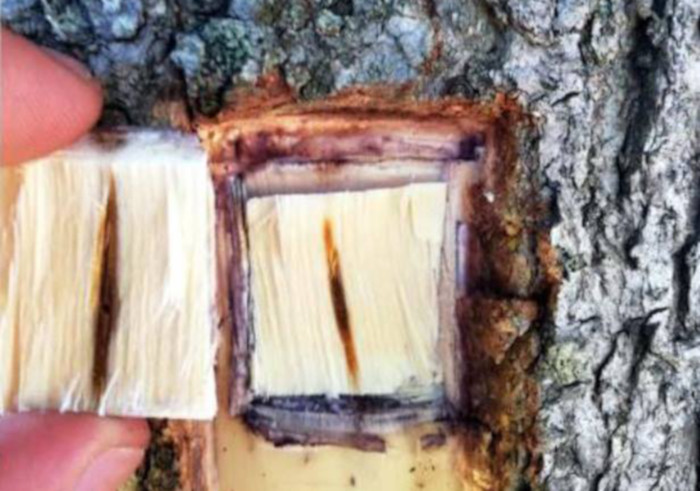An invasive beetle species which is described as a “devastating insect pest” has been found in Somerset West inside both Liquid Amber and London Plane trees.
In an official statement issued by Stellenbosch University, academic experts Professor Francois Roets of the Department of Conservation Ecology and Entomology and Professor Z Wilhelm de Beer of the Forestry and Agricultural Biotechnology Institute of the University of Pretoria confirmed the presence of the Polyphagous Shot Hole Borer beetle (PSHB) for “the first time within the boundaries of the City of Cape Town Metropolitan area.”
A sighting of the beetle species was reported on March 8 2019 by Phumudzo Ramabulana from the City of Cape Town and Paul Baker from Arderne Gardens. A Masters student at the University of Stellenbosch, Elmar van Rooyen, is currently working on the beetle for his thesis and conducted samples from the infested trees for laboratory analyses.
“The identity of the beetle and its symbiotic fungus was confirmed using morphological and DNA sequence analyses, and comparisons to the extensive database at the Forestry and Agricultural Biotechnology Institute (FABI), University of Pretoria,” van Rooyen said.
The species has already destroyed more than 10 000 trees across the country and poses a serious threat to agriculture and native trees in the City of Cape Town and surrounding areas.
Burrowing boreholes in the branches of its host tree, the adult PSHB digs tunnels inside it to lay its eggs. The beetle also transport a fungus which attacks a tree’s vascular tissue, causing a disease called fusarium dieback (FD). This disease interrupts the supply of water and nutrients to the tree, and the tree can be destroyed in a very short period of time by the disease.
Academic experts state that English Oak trees are the most vulnerable to the PSHB. “Based on our experience with the PSHB invasion in George, Knysna, and other urban areas, trees like English Oaks are particularly susceptible and suffer from high mortality rates.”
A complete list of possible host trees for these beetles can be found here.
Although there are currently low levels of infestation reported, experts are concerned due to the rate at which the beetle reproduces.
“The seemingly low current infestation levels in the area indicates that this is likely a very recent invasion, but the species is capable of rapid reproduction and may also spread quickly through human-mediated transport (particularly the movement of infested wood).”
Experts are suggesting that the suburb must be extensively surveyed to determine the extend of the infestation. “All infested trees, particularly those known to be reproductive hosts… should be removed in an attempt to eradicate the pest and minimise its economic, social and environmental impact.”
The response of trees to the pest varies, and if detected early enough, the infestation can be effectively treated to prevent damage.
According to the Forestry and Agriculture Biotechnology Institute (FABI) trees which are infected show the following symptoms:
– Gum extraction on the bark
– Entry and exit holes
– Sugary exudates
– Staining
Residents are urged report any signs of a possibly infested tree here and submit images of the tree and entrance tunnels to assist with speedy identification.
The online report will then be sent to the City of Cape Town Invasive Species Unit and a City arborist at the City Parks and Recreation department for further investigation.
Also read: Invasive beetle species threatens local trees
Picture: Cape Town Invasive Species / Facebook






